Warner relaunches its DC Cinematic Universe with its most famous of characters, but is it still Superman?
Director: Zack Snyder
Writer: David S. Goyer
Runtime: 143 minutes
Starring: Henry Cavill, Amy Adams, Michael Shannon, Kevin Costner, Diane Lane, Laurence Fishburne, Antje Traue, Ayelet Zurer, Christopher Meloni, Russell Crowe
Distributor: Roadshow Films
Country: US
Rating: ★★★
As the Marvel Cinematic Universe continues to prove that superhero box office is alive and well, Warner has struggled to advance its own properties to the big screen. Despite the successes of Christopher Nolan’s Dark Knight Trilogy, and television’s Arrow, the disappointments of Green Lantern and Superman Returns have seen the studio turn to a Zack Snyder to rebirth their own cinematic universe. With visually faithful adaptations of Frank Miller’s 300 and Alan Moore seminal Watchmen already under his belt, Snyder takes an even bigger risk by attempting to bring arguably the first great American superhero to life for the second time this century.
While Man of Steel is undoubtedly influenced by Mark Waid’s Superman: Birthright, Geoff Johns’s Superman: Secret Origin and certainly elements of Superman: Earth One, David S. Goyer’s screenplay is mostly its own beast. It does, however, re-imagine much of Richard Donner’s framework from Superman and Superman II, especially in terms of the villains. As the politically turbulent planet Krypton begins to destroy itself, scientist Jor-El (Russell Crowe) and his wife Lara (Ayelet Zurer) launch their newborn son Kal-El in a rocket bound for Earth. Fusing him with the ancient Kryptonian codex, he grows up in Kansas with foster parents Jonathan (Kevin Costner) and Martha Kent (Diane Lane), absorbing the Earth’s solar radiation and developing amazing abilities. After a lifetime of hiding his powers, the adult Clark Kent (Henry Cavill) is almost exposed by intrepid Pulitzer Prize winning journalist Lois Lane (Amy Adams). However, when Jor-El’s enemy General Zod (Michael Shannon) arrives on Earth, Clark must step into the light and become the hero he was always destined to be.
Superman is one of the hardest characters to write in any format, and not simply because there is seventy-five years worth of material already out there. Like Disney’s Mickey Mouse, he works best in his purest form, as a genuinely nice guy who has taken on the mantle of Earth’s protector. Superman Returns, while excellently capturing the fine line between saviour and god, demonstrated that Superman’s strength is also his biggest drawcard. Without the ability to punch something, we are left with an overgrown boyscout. To Goyer’s credit, he attempts to layer the almost universally familiar origin story with the struggles of the outsider trying to fit in, using the same chronological shifts he mastered in Batman Begins. It’s just unfortunate that this time out those shifts only ever serve to make the film feel disjointed, shifting tone from one genre to the next, almost as if the filmmakers forgot to fill in the gaps between scenes. It is unsurprising given that Snyder’s last outing was Sucker Punch, a film that made no apologies for cherry-picking “cool stuff” the director liked and throwing it all into the cinematic sink.
Like that previous Snyder film, action is a strong point for Man of Steel. From the opening scenes, we see Krypton like we have never seen it before, a world at war with itself, bristling with technological wonders that range from pin art to The Matrix babies. It delivers a jolt of action to get the audience ready for what is ultimately the mass destruction of several locations on Earth, and Snyder demonstrates that he is accomplished at bringing these wild visions to life. His skills do not extend to bringing those sequences into a cohesive structure. Comparing this with last year’s The Avengers, for example, director Joss Whedon’s explosions were the payoff for all the threads he had been weaving. Here, the action sequences stumble in, tripping over the tangle of plot threads that may or may not have been leading somewhere. Rather than a full stop, they are repeated exclamation marks, relentlessly pummelling their way out to the audience in glorious 3D.
It’s a shame, because some of the ideas and moments are classic Superman. Clark, upon learning of the heartbreaking duality that comes with not being native born to Earth, has a touching scene with Pa Kent. However, this is almost undermined by several poor decisions and actions the elder Kent takes later in the film. A similar moment of reflection between Martha and her adopted son is abruptly and clumsily cut short for an explosion or two. Baby daddy Jor-El comes off as a virtual saint as a result. What really jars is Clark’s decision to don the suit as one of narrative necessity, rather than a conscious decision to become ‘Superman’. As such, it is the villains that become the strongest characters, with their motivations clear from the start. Shannon, fresh from bringing the crazy on television’s Boardwalk Empire, takes it up a notch with his maniacal decision to rule the Earth, even if the rapid development of his powers contradicts what we know about how Kal-El gained his. In return, Cavill mostly responds with heroic stances and petulant cries of anguish. He makes a convincing Superman/Kal-El, but he is less comfortable as Clark Kent.
In an attempt to modernise Superman, Goyer and Snyder have exchanged the optimism of Grant Morrison’s definitive All-Star Superman for something closer to producer Christopher Nolan’s Dark Knight trilogy. It’s an impressive visual feast, and some of the more common comic books are no more or less ambitious than this film. Yet it’s also lacking in joy, save for a few moments, and one has to wonder if this is truly a Superman film at all. Indeed, save for a handful of mentions of the ‘S’ word, Man of Steel goes out of its way to remind us that this is not your daddy’s Superman. Coupled with a final decision that Kal-El makes that is horribly out of step with the ideal of the hero, it is a film that might succeed as an action spectacle, but less so as a spiritual adaptation. Yet this is just the beginning, the first in what will undoubtedly be several chapters with this Superman. Kal-El tells Lois that it is not an ‘S’ on his chest, but a symbol for hope. It’s hope that we are left with, a hope that despite the stumbles and falls, in time the series will join the best Superman tales in the sun.
Man of Steel is released in Australia on 27 June 2013 from Roadshow Films.
Start a conversation below, or take it with you on Behind the Panel’s Facebook and Twitter!
If you are an iTunes user, subscribe to our weekly podcast free here and please leave us feedback.

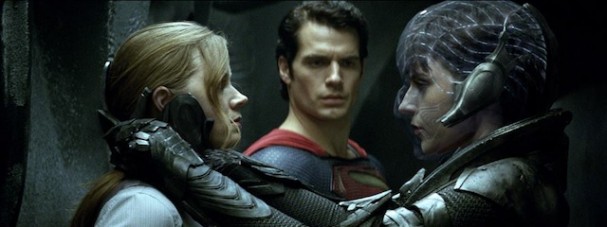

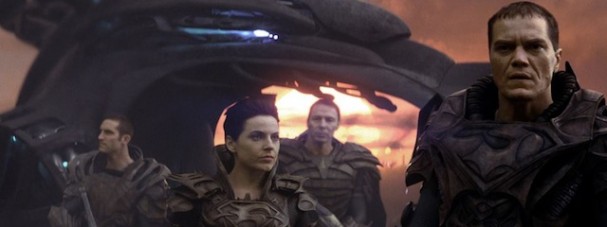

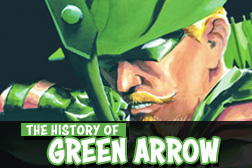

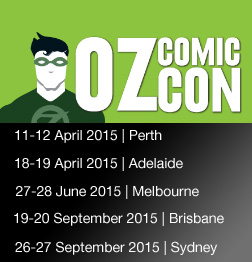
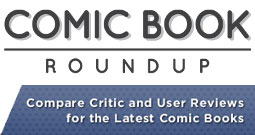




3 comments
1 pings
While critically a failure, all this talk of “disappointing” Superman Returns is overhyped. The film got higher box office than Batman Begins according to Box Office Mojo – and presumably that includes a few smaller-scale re-releases for Batman Begins too (such as cinemas showing all three films in the trilogy).
As for this. Again the Darkness. There is a perceived wisdom comic based films have to be “dark” to be “adult”. Except, none of the Marvel films are. And when they do show some darkness, its more the more affecting because it stands out. Superman Returns had problems – some major – but at it’s heart it didn’t misunderstand the Superman concept – a concept that has lasted for 75 years with little change – as much as this film does.
Wasn’t talking about disappointment so much in terms of box office for Superman Returns. I know it did well for itself. Just disappointing in terms of failure to successfully be the Superman film that I/we wanted.
I have no problem with “dark” superhero movies per se, as some comics are incredibly dark. Like you say, it doesn’t work universally. The Avengers was joyful and exuberant, and it’s what I wanted in Man of Steel. Superman Returns teetered too close to the “silly Lex” from the Richard Lester films, and didn’t give Superman enough to do but angst over a horrible child actor and a miscast Lois.
Yes. Returns had problems. Sadly, I don’t think Routh was one though. I would have liked to have seen him in two sequels. He seems to of had a raw deal.
Darkness – yes some comics are. But the most popular Marvel comics are the Avengers line (probably due to the films admittedly) and Deadpool. Neither is hardly a poster boy for “Dark”.
Dark, gritty characters seem to be off the menu at Marvel. Cable, Ghost Rider, Blade, etc… none seems to be able to sustain an ongoing, despite the last two of my examples being well known thanks to other media.
Arguably too “Dark” titles like The Punisher work best when mainly blackly funny too – look at Ennis’ run, or Remender’s. Yes comics need Darkness and comics work with Darkness. But not JUST dark and gritty. You need light to make the dark have more impact.
As for Man of Steel – again I say it’s a fundamental misunderstanding of the character. A Superman film should – at the end of the day – be fun. It should be funny as well as thrilling – how on Earth could DC/Warners have seen the success of Marvel’s films and realised that they succeed because of the characters? We care about the characters, even when CGI suits of armour are beating each other senseless, and we care because the characters are/can be funny.
How anyone involved in making a big budget Superman film could think it would be a good idea to clinically remove almost all traces of humour is something that I simply cannot understand.
As for “that” moment – again it misunderstands the concept of the character. Despite being so powerful, the best Superman stories are not about power or “might is right” or “the ends justify the means”. They’re about brains beating over brawn.
I don’t care how much hand-wringing their is afterwards, it shows a lack of imagination if that’s the storytellers’ best means of ending the threat. Superman stories are hard to write I would imagine because he is so “super”. But it means you should try harder, not “Die Hard”.
[…] full review can be found here, while David and Richard discuss the film in detail on the podcast in Behind the Panels Issue 63. […]